Pou concept for Take Kārara
The following concept is based around the ideas shared within the narrative booklet created by Aukaha, Te Kura o Take Karara website and correspondence between myself and the Kura via Jodie and conversations with Matua Bubba and Paulette.
The design:
There are three main forms
Three has a lot of significance with the values and ideas of Take Karara,
Past-Present-Future, Staff-Student-Caregiver/s, Community-School-Whanau.
The central form is that of a waka haul, it is the largest and represents the present, student and school. The waka also represents the schools vision of ‘nurturing learners to navigate pathways for the future’. The waka also relates to Ka AraTawhito, the traditional pathways.
The other two forms, the Past,Staff and Community on the left, and the Future, Caregiver and Whanau on the right. These forms are the ama/out riggers to the waka. They are there as support alongside the waka and the journey but unattached as students navigate their own path of learning as described in the school logo description.
Details within each form
Waka front view:
Wheku(top) – At the very top is a wheku/mask representing the student navigating their path of learning success and becoming a collaborative and active citizen.
The wheku has its mouth wide open with many teeth. This is in relation to mahinga kai. Mahinga Kai is seen as more than food – it is kai for the ears, kai for knowledge, kai for the soul, kai for storytelling – indeed it is food for life.
The whakarei/Surface adornment on the wheku is Pakura, named after Tawhaki meeting Pakura descending the spiders as Tawhaki climbs up the heavens.
Poutama
Poutama is a design related to the stairway to the heavens. In some accounts this was the path to which Tane climbs to obtain the baskets of knowledge. The steps are often seen as the different levels of obtaining knowledge or skills.
Water line
This is the water line from the logo which represents new beginnings, acknowledging what was and the meaning behind the mangopare design from the logo. Above the water line is what is present and below the foundation of the past from which the new beginnings are being built on.
Matakupenga
This is a fishnet design, used here to represent the harvesting of tuna. The kupenga will be more numerous to give an appearance of a hinaki.
Wheku(bottom)
This wheku acknowledges those that occupied the land before us and the journeys they took. The top part of the wheku is a kete representing some of the Matauraka learned in this area and represents one of the three baskets of knowledge. The handle of this kete is also part of the top knot. In a wharenui the poupou hold the heke/kowhaiwhai rafters in place in or on the top of their head. The heke is often thought of as the pathway to the atua and knowledge. Outside of a wharenui the heke is depicted as a top knot. This is one account of why having hair tied up in this manner was a sign of statis. The wheku also can be seen holding a round shape within its mouth. This is a stone that would be held in the mouth while given instruction during the time of learning.
The whakarei is Niho taniwha. This is a highly ranked design and is carved on the wheku of the tiki/tekoteko that is on display at the Otago museum that was found in the Wanaka area.
Ama forms
Both forms are mirrored with similar meanings on both sides. They are in a triangular shape reinforcing the “three themes’’
Puhoro
This design is often found on the bottom of waka and the thighs of warriors. It is often representing speed, movement and agility. Here it depicts the community, staff, caregivers and whanau moving forward in the same direction supporting and growing the student. This is also above the water line being the present.
Hei tiki and Tara Tara a Kae
These are both below the water line being the past. The hei tiki represents the pounamu trails and the highly valued resource. On the side is a contemporary form of Tara tara a kae. This design comes from the story of Kae and Tinirau. The design is prominently found on pataka/wharepu. Here it represents Te ara tawhito and the gathering of the various resources of the area.
Rear view
At the top and bottom of the waka are the second and third kete of the baskets of
knowledge. Running down both sides is the design rauponga. Derived from a leaf. The horizontal haehae is the stem of the leaf. There are six on each side representing the students years one through six.
Hoe
The shape of the hoe is referenced from the hoe that was found in the area. The distinctive features have been depicted. The hoe in the waka is a challenge to the students to take grasp of their learning/life journey.
All three hoe together represent kotahitanga, having students, staff, caregivers, whanau and the wider community rowing all the same way.
Steve Solomon
Artist
